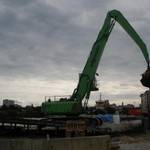MarineLink News Search
Search term • dredging
Create an email alert for dredging
Michigan Marinas Need Deeper Water

Michigan Boating Industries Association (MBIA) applauds introduction of legislation to help marinas during dredging crisis. Senate Bill No. 215, introduced by Senators Brandenburg, Hansen, Casperson, Booher, Green, Walker, Robertson, Jones, Proos and Smith is an act which will provide for low interest loan opportunities for marinas in need of dredging. "The problems facing our waterways need to be addressed immediately and a long-term strategy to maintain them needs to be developed…
LCA Endorses Government Report
U.S.-flag shipping on the Great Lakes provides efficient, safe, and environmentally sound transportation services to industries that are the backbone of the American…
Superyacht Operators' Fuel Tax Dodges Stymied
European Union tax revenue authorities are on the alert for any infringement of complicated bunker fuel tax regulations. Turn the key of one of the big ones and…
Bulk Transport Leadership: Clark Todd

Drought and ensuing low river levels continue to affect the inland industry. Low water between St. Louis and Cairo, Illinois has threatened traffic on the Mississippi River since December. For months, dredging operations have slowed vessels at points along the river's course. Since December, a stretch at Thebes, Illinois, has been shut for much of each day as the U.S. Army Corps of Engineers removes rock pinnacles.
Bulk Transport Leadership: Dan Martin

Drought and ensuing low river levels continue to affect the inland industry. Low water between St. Louis and Cairo, Illinois has threatened traffic on the Mississippi River since December. For months, dredging operations have slowed vessels at points along the river's course. Since December, a stretch at Thebes, Illinois, has been shut for much of each day as the U.S. Army Corps of Engineers removes rock pinnacles.
Bulk Transport Leadership: Merritt Lane

Drought and ensuing low river levels continue to affect the inland industry. Low water between St. Louis and Cairo, Illinois has threatened traffic on the Mississippi River since December. For months, dredging operations have slowed vessels at points along the river's course. Since December, a stretch at Thebes, Illinois, has been shut for much of each day as the U.S. Army Corps of Engineers removes rock pinnacles.
Bulk Transport Leadership: Terence Gomez

Drought and ensuing low river levels continue to affect the inland industry. Low water between St. Louis and Cairo, Illinois has threatened traffic on the Mississippi River since December. For months, dredging operations have slowed vessels at points along the river's course. Since December, a stretch at Thebes, Illinois, has been shut for much of each day as the U.S. Army Corps of Engineers removes rock pinnacles.
Bulk Transport Leadership: Rick Calhoun

Drought and ensuing low river levels continue to affect the inland industry. Low water between St. Louis and Cairo, Illinois has threatened traffic on the Mississippi River since December. For months, dredging operations have slowed vessels at points along the river's course. Since December, a stretch at Thebes, Illinois, has been shut for much of each day as the U.S. Army Corps of Engineers removes rock pinnacles.
Great Lakes Shipping Shows Signs of Recovery
Overall U.S. maritime cargo volumes in the Great Lakes region are recovering from extreme lows experienced in 2009 finds a MARAD study. The U.S. Department of Transportation’s…
Great Lakes Crisis Continues: Dredging and Water Both Needed
Lake Michigan-Huron sets all-time record for lowest monthly water level. The U.S. Army Corps of Engineers, Detroit District through its Great Lakes Hydraulics and…
Great Lakes Dredging hinges on Federal Legislation

House and Senate Bills Offer Hope for Lakes Dredging Crisis. Both the House of Representatives and the Senate have taken up legislation that could end the dredging crisis on the Great Lakes. H.R. 335 and S. 218 would require the Harbor Maintenance Trust Fund (“HMTF”) to spend what it takes in each year for dredging on dredging. Currently, the HMTF spends only one of every two tax dollars it collects for dredging on dredging.
Ohio Senator Co-sponsors Harbor Maintenance Act
U.S. Senator Rob Portman supports legislation to help ensure funds for harbor maintenance etc. are used as intended. The Senator co-sponsored the Harbor Maintenance Act…
Great Lakes Dredge & Dock Net Arthur Kill Contract
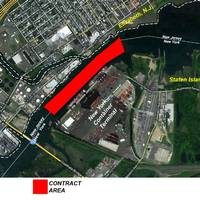
The U.S. Army Corps of Engineers (ACE) contract is for deepening NY/NJ Arthur Kill Channel to 50 feet. The contract area for this project is along Newark Bay, New Jersey and the Arthur Kill, Borough of Staten Island, New York, N.Y. Its value is $41,368,100, cost-shared with The Port Authority of New York and New Jersey. The project includes drilling, blasting, dredging, and disposal of rock. contract will not adversely affect the surrounding communities.
Houston Hosts Homeland Security Briefing

At a briefing held Wednesday at the Port of Houston Authority, U.S. McCaul chose the port as the site to host the briefing on security and emergency preparedness to illustrate the importance of the Port of Houston to the nation's economy and energy security. The Port of Houston is home to the largest petrochemical manufacturing complex in the United States and second largest in the world. McCaul met with Port of Houston Authority officials as well as Houston…
Dredger Builder Delivers Workboats Too
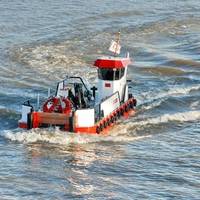
IHC Beaver Dredgers, known for standard cutter suction vessels, continues to deliver workboats to complement its dredgers. For example, the company has supplied another Delta Multi Craft (DMC) 1050 to support an IHC Beaver® 1200 for its operations in Nigeria. The workboat was supplied from stock to ensure a minimum lead time and it has now formed the perfect working partnership with the dredger. The versatile DMC 1050 will assist the dredger in its daily operations.
Multinational Institutions Visit Panama Canal

Representatives from the five multilateral institutions that have signed agreements for the financing of the Panama Canal Expansion Program took part in the annual visit organized to oversee the program’s progress. “This visit is part of the agreement signed between the Panama Canal Authority and the five institutions that have provided partial financing for the Expansion Program,” Panama Canal Administrator Jorge L. Quijano said at the end of the tour.
ABC: Powering Up for the Next 100 Years

On the occasion of its centenary, a new engine type, the DL36, has being launched to meet the future emission directives of 2016. The new range combines a small environmental footprint with the ability to deliver more than 10,000 kW. ABC’s power range will thus more than double, opening up new markets and segments. At the same time ABC has experience with hybrid drives and alternative fuels, from vegetable oils through animal fats to natural and bio gas.
Panama Canal Expansion Moves Forward
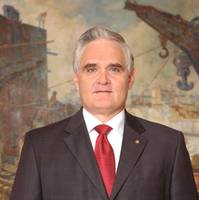
The Panama Canal Expansion is moving forward to reach its goal of bolstering the waterway’s capacity in order to provide a better service. To date, the program is 50% complete. “The program continues to progress and reach milestones while we focus the next phases on building the locks,” said Panama Canal Administrator Jorge L. Quijano. Beginning 2013, the Expansion Program has completed several projects. Dredging of the navigational channels has been completed.
Great Lakes Dredging Remains as a 2013 LCA Priority
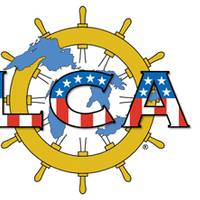
The dredging crisis on the Great Lakes will again dominate Lake Carriers’ Association’s efforts in 2013. LCA’s 2012 Annual Report released today stressed that inadequate dredging took a real toll on Great Lakes shipping in 2012. “The drought has pushed water levels on Lake Michigan and Huron to record lows,” the Association noted. “The water level in the St. Marys River also declined as 2012 wore on; by year’s end ships were loading to less than 26 feet.
Great Lakes Iron Ore Trade Up
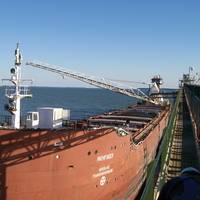
Shipments of iron ore on the Great Lakes totaled 61.6 million tons in 2012, a slight improvement over 2011. The increase, 245,000 tons, is equal to about four cargos in a 1,000-foot-long vessel operating at current drafts which are significantly reduced by the dredging crisis and falling water levels. If a vessel that size was able to load to depths available when the Lakes were at near record highs in 1997, it could carry that much cargo in 3.4 trips. Shipments from U.S.
DSC Dredging Takes Dredge Accuracy to a Higher Level
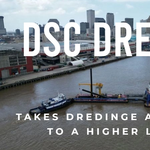
U.S. Dredging Boom Has Long Legs

HEGEMANN V equipped with VisuDREDGE & Multiped: Data supports on board processes

SENNEBOGEN Finds New Purposes For Purpose-Built Material Handlers In Marine Industry
